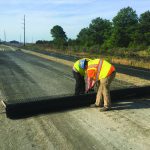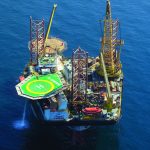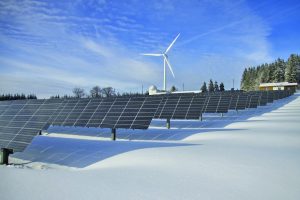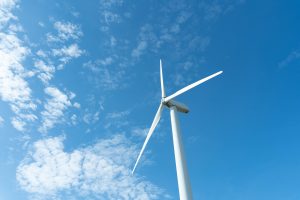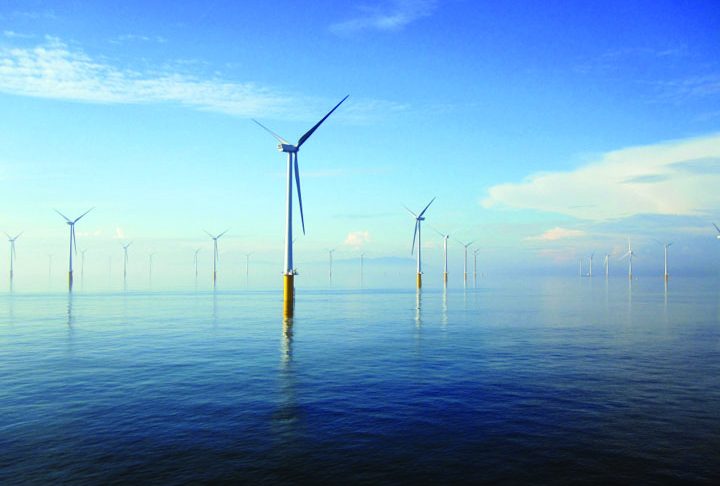On February 3, United States President Barack Obama unveiled the “Better Building Initiative” to help the country “Win the Future” in a talk on the University Park campus at Penn State. The vision is to improve the energy efficiency of commercial building space by 20 percent over the next nine years. Cutting-edge energy research and development form the new frontier of reducing the energy consumption of buildings that currently amounts to 40 percent of the entire energy used in the United States. Many of those efforts will be conducted at the Energy Innovation Hub for Energy Efficient Buildings at the Philadelphia Navy Yard. The entire effort referred to as the Greater Philadelphia Innovation Cluster (GPIC) includes 11 academic institutions, two DOE laboratories, five global industrial partners, community colleges, and regional economic development agencies. In total, GPIC includes more than 90 organizations aiming at national energy independence and economic development.
This federally funded initiative is led by Penn State and includes 23 faculty members from five Penn State colleges including Engineering, Arts and Architecture, Earth and Mineral Sciences, Health and Human Development, and the Smeal College of Business. The biggest challenge will be to make new technologies economically viable. Some examples are materials that can remove humidity without lowering temperatures below uncomfortable levels, sensors that can control air filters as needed in order to remove harmful air particles, and building facades that adjust to changes in outdoor temperatures and sunlight.
The centerpiece for the Philadelphia Navy Yard will be the Clean Energy Campus, offering researchers an area with an independent electric grid and diverse building stock waiting for future development. Two other national Energy Innovation Hubs will focus on nuclear energy and developing fuel from sunlight. Penn State and the state of Pennsylvania expect the initiative to spur job growth not only in Philadelphia, but also in the region and beyond. President Obama said that if the goals of the Better Building Initiative are met it will save the nation’s businesses nearly $40 billion annually on energy bills by 2020. That money could be spent growing those businesses and hiring new workers, according to the president. Furthermore, Obama projects that the plan would be paid for by a variety of tax incentives as well as financial opportunities, and by ending existing subsidies for gas and oil companies. For more information about the Greater Philadelphia Innovation Cluster visit www.gpichub.org.
Penn State was also proud to host the “Community Wind across America” Mid-Atlantic region conference held in February. This event was presented by Windustry, with support from the U.S. Department of Energy (DOE). Prominent keynote speakers included Jacques Beaudry-Losique, the director of the DOE’s Wind and Water Program. The goal of the event was to bring together national and regional experts to focus on simplifying policy structure and to give practical “how to” information on wind project development to interested individuals and land owners. Success stories about harvesting America’s wind were shared in terms of overcoming barriers in finances, community permitting, and environmental issues including visual, noise, and avian impacts. Best practices for siting wind turbines on a property were shared, a relevant topic with regard to the upcoming NABCEP Small Wind Site Assessor Certification. The Permitting and Zoning Panel addressed present challenges in zoning and local permitting, and what can be done to streamline the process. Examples from ordinance cases were presented that took projects from “stalled” to “installed.” Furthermore, guidance was given to potential investors in small wind with a vivid discussion on how to choose an installer and what timeline to expect for project realization. A technology discussion from the installers’ perspectives about the current state of small wind turbines and everyday installation problems followed earlier presentations about the “Unrealities of Wind” that aimed at giving advice on how to choose a machine from the wide variety of new machines available in conjunction with the Small Wind Certification Council (SWCC). A broad range of exhibitors included manufacturers, installers, educators, and national agencies.
From a technology perspective it was intriguing to see that machines are simply starting to “look” more efficient and well designed—the small and community wind market is on the rise. It is one more example of why wind is probably the most prominent renewable energy source. The market is there, the process just has to be streamlined and communities will build toward energy independence with regional job creation. For more information visit www.windustry.org/cwaa.

















